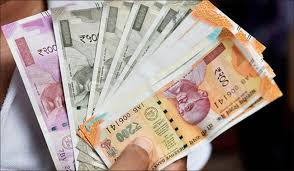The Organization of the Petroleum Exporting Countries pumped 32.00 million barrels per day in May, the survey found, down 70,000 bpd from April's revised figure. The May total is the lowest since April 2017, according to Reuters surveys.
OPEC is reducing output by about 1.2 million bpd as part of a deal with Russia and other non-OPEC producers to get rid of excess supply. The deal began in January 2017 and, in theory, runs until the end of 2018.
With the supply glut largely cleared and oil topping $80 a barrel this month for the first time since 2014, OPEC and Russia are now shifting policy and discussing pumping more, although analysts expect any boost to be cautious.
"OPEC's bias to err on the side of tightening remains intact," said Konstantinos Venetis, senior economist at TS Lombard. "Easing the restrictions just means that its 'line in the sand' moves slightly back."
For now though, adherence by producers in the deal to agreed levels remains strong. Compliance slipped to 163 percent of agreed cuts in May from 166 percent in April, the survey found, meaning they are still cutting far more than agreed.
The biggest decrease in supply came from Nigeria due to unplanned outages. Royal Dutch Shell's Nigerian venture declared force majeure on Bonny Light crude exports, while loadings of another crude, Forcados, are facing delays.
The second-biggest decline came from Venezuela, where the oil industry is starved of funds because of economic crisis. Output dropped to 1.45 million bpd in May, the survey found, a new long-term low.
Production in Libya, which remains unstable due to unrest, edged lower because AGOCO, an eastern Libyan producer, had to curb output as unusually hot weather led to power problems.
Iranian output, expected to decline as the U.S. re-imposition of sanctions discourages companies from buying the country's oil, edged lower in May but there was no evidence yet of a sizeable drop, sources in the survey said.
OPEC's two largest producers, Saudi Arabia and Iraq, both pumped slightly more in May but not enough to offset the declines elsewhere.
Saudi Arabia's output edged up due to more crude being used in domestic power plants, sources in the survey said, but remained below the kingdom's OPEC target.
Iraq, the second-largest, pumped more because of an increase in exports from the south, the outlet for most of the country's crude, following a decline in April.
Output in the country holding the OPEC presidency this year, the United Arab Emirates, was steady in May as it continues to show higher compliance than in 2017, sources close to the matter said. Kuwait also maintained full compliance.
Nigeria and Libya were originally exempt from cutting supply because their output had been curbed by conflict and unrest. For 2018, both told OPEC that output would not exceed 2017 levels.
OPEC has an implied production target for 2018 of 32.73 million bpd, based on cutbacks detailed in late 2016 and taking into account changes of membership since, plus Nigeria and Libya's expectations of 2018 output.
According to the survey, OPEC pumped about 730,000 bpd below this implied target in May, not least because of the decline in Venezuela and a similar involuntary drop in Angola, where the survey found output was flat in May.
The Reuters survey is based on shipping data provided by external sources, Thomson Reuters flows data and information provided by sources at oil companies, OPEC and consulting firms.
CLICK HERE FOR GET DETAILS & JOIN OUR BEST ADVISORY -









